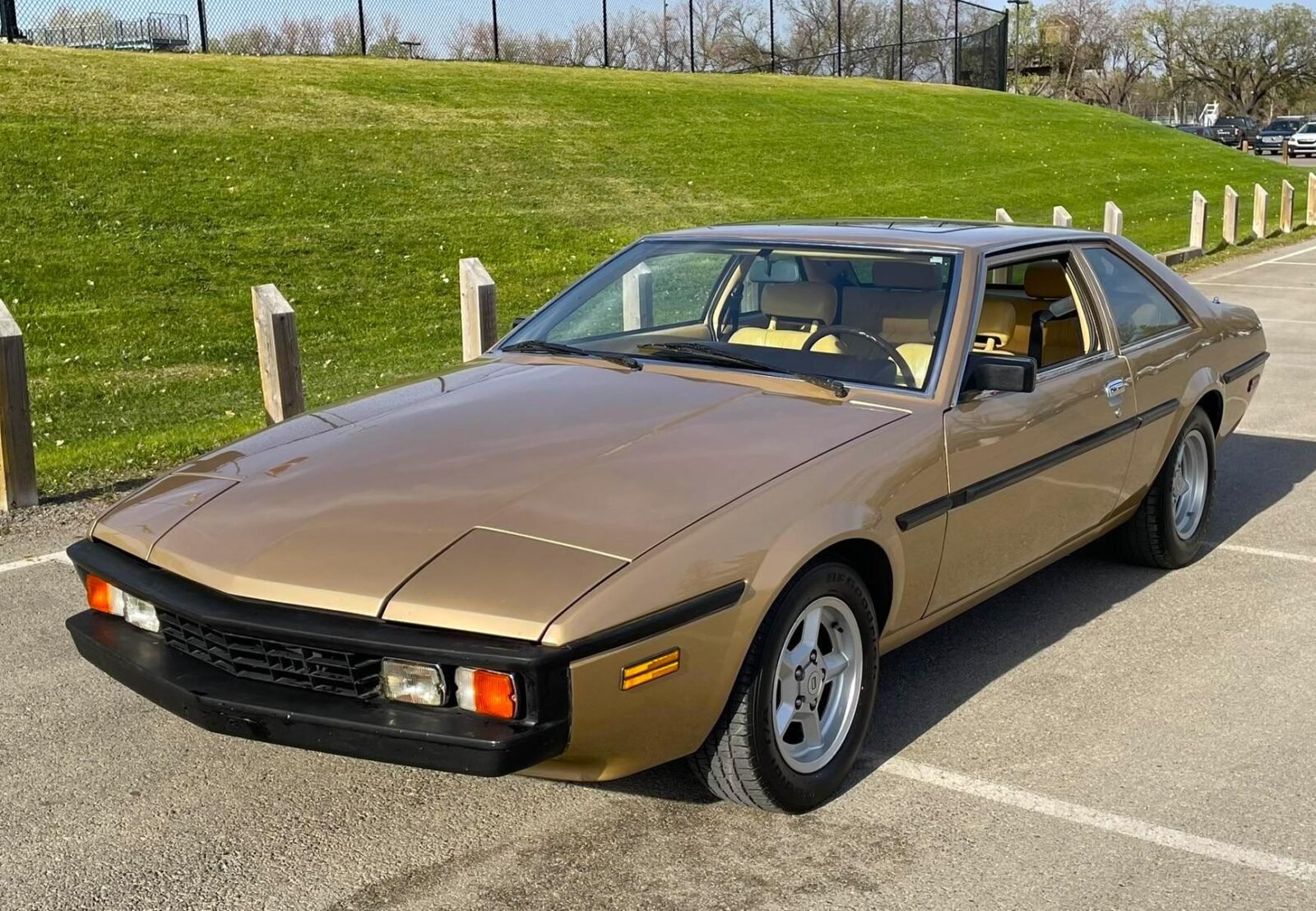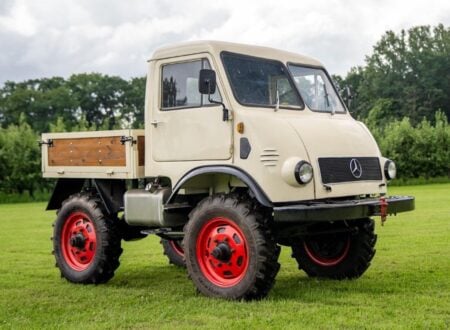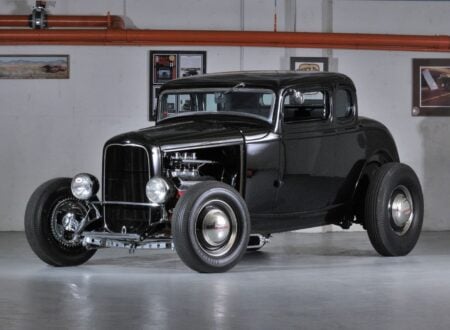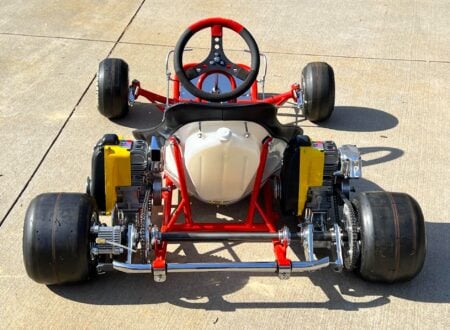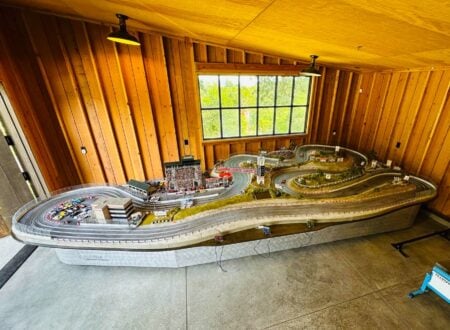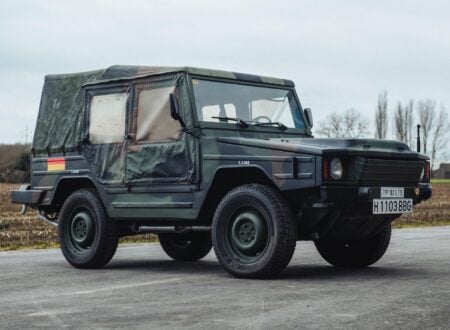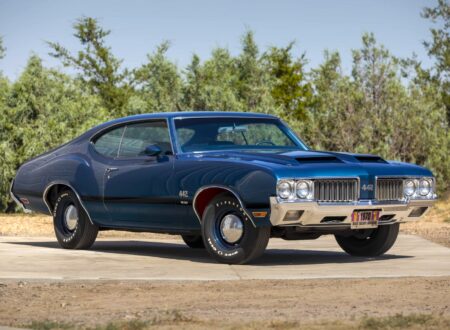This is a 1985 Bitter SC, it’s a German GT car developed by former racing driver Erich Bitter and his team, and designed by Italian stylist Giovanni Michelotti.
Many have never heard of the Bitter SC, particularly those outside of Europe, and many mistake it for the somewhat similar-looking Ferrari 400 series. Fewer than 500 were made, and today they are considered quite collectible by those in the know.
Fast Facts: The Bitter SC
- The Bitter SC was developed by Erich Bitter’s boutique German firm and styled by Italian designer Giovanni Michelotti. It debuted at the Frankfurt Motor Show in 1979. The car was built on the Opel Senator’s mass-produced platform, it had a distinctive, minimalist design perhaps influenced by Ferrari’s 365 GT4 2+2.
- Available engines included Opel’s inline-six-cylinder units: initially, a 3.0 liter version producing 177 bhp, followed by a more powerful 3.9 liter variant generating 210 bhp. Transmission choices were either a standard 5-speed manual or an optional 3-speed automatic.
- Produced between 1979 and 1989, the Bitter SC came in three body styles: a two-door coupe, a rare four-door sedan, and an exceptionally rare convertible model, with fewer than 30 examples built. The luxurious interiors featured leather upholstery, power accessories, air conditioning, and more – in the hopes of attracting discerning buyers seeking exclusivity.
- Although fewer than 500 Bitter SC models were produced, financial constraints ultimately ended its manufacture by the late 1980s. Today, surviving examples like the desirable 1985 variant equipped with the 3.9 liter engine and 5-speed manual transmission, finished in gold with beige leather interior, remain highly collectible and valued by enthusiasts.
Bitter Automotive
Bitter Automotive was founded by former racing driver Erich Bitter in 1971 as a niche German automobile manufacturer – the goal was to combine reliable German engineering with sophisticated Italian design, producing what might have been the perfect car.


Bitter Automotive started out in close partnership with Opel, a major European automobile manufacturer and a subsidiary of General Motors. This relationship formed the technical foundation of Bitter’s automobiles, providing reliable, accessible, and proven components platforms and drivetrains.
The Bitter CD
The first model, the Bitter CD (Coupé Diplomat), was launched in 1973. It was built on the Opel Diplomat chassis and it featured sleek, angular styling, a long low hood, and a front-engine, rear-wheel drive layout.
The Bitter CD was first shown to the world at the 1973 Frankfurt Motor Show where it received almost 200 orders, but the 1973 Oil Crisis saw most of those orders cancelled when it kicked off later that same year.
The Bitter SC
Bitter’s follow-up car, the Bitter SC, debuted at the Frankfurt Motor Show in 1979. It represented an evolution both in style and practicality – it targeted a broader audience, offering elegance with genuine daily driver usability.
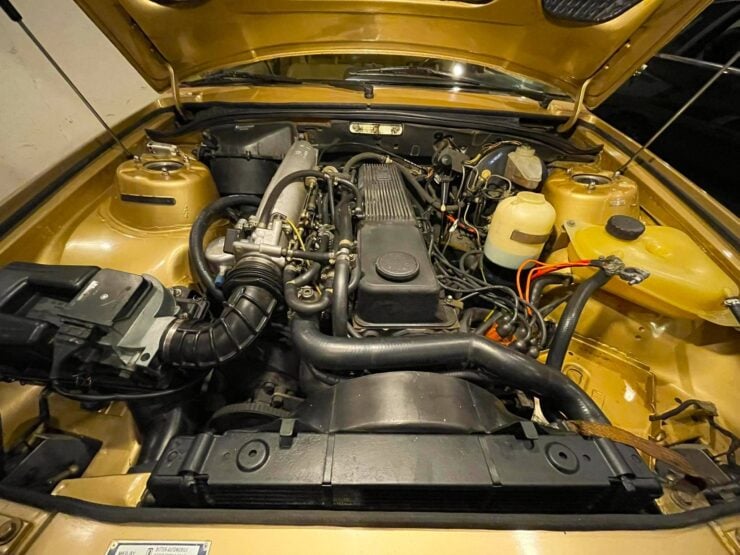

Erich Bitter enlisted Italian designer Giovanni Michelotti to create a sleek, timeless shape for the SC, characterized by smooth, sharp lines and minimal ornamentation.
The design aesthetic of the SC was unique, but there could be no denying that it had been in some way influenced by the Ferrari 365 GT4 2+2 which had been styled by the great Leonardo Fioravanti at Pininfarina, making its debut in 1972.
Underneath Michelotti’s elegant-but-minimalist bodywork, the Bitter SC was based on the Opel Senator platform, a mass-produced vehicle that was cost-effective and modestly sophisticated by the standards of the time.
Specifications + Drivetrains
The SC being based on the Senator ensured ample availability of replacement parts, straightforward maintenance, and it significantly reduced the manufacturing complexity that typically burdens smaller, boutique automakers.
Mechanically, the Bitter SC was powered by Opel’s inline-six-cylinder engines, available in two displacements. The initial version was powered by a 3.0 liter inline-six delivering approximately 177 bhp, capable of a 0 to 60 mph time of approximately 9.0 seconds, and a respectable top speed of 130 mph.
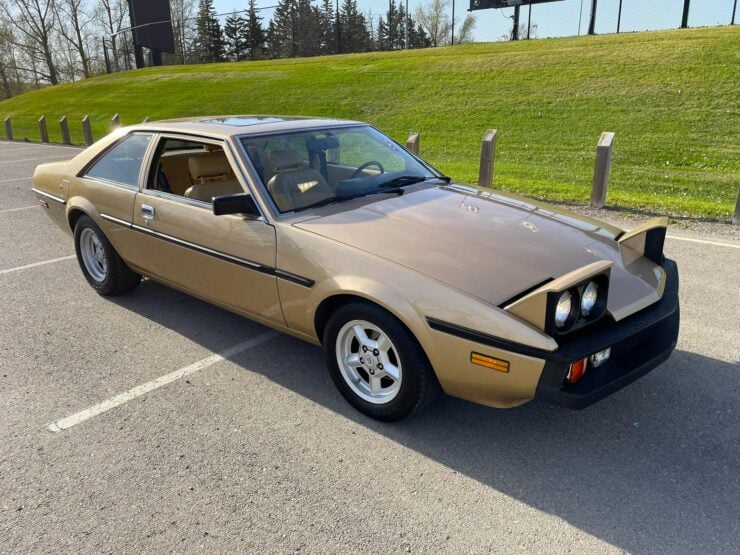

Later in production, an upgraded 3.9 liter version of the inline-six became available that’s to the engine being stroked, increasing power output to 210 bhp and improving the overall performance metrics considerably.
Transmission options included a standard 5-speed manual gearbox or an optional 3-speed automatic, again sourced from Opel.
The suspension layout for the Bitter SC followed the standard Opel Senator system, with independent MacPherson struts at the front, and semi-trailing arms with coil springs at the rear. This arrangement was said to provide balanced handling, stability at highway speeds, and comfort over longer journeys – though suspension tuning was kept a little on the softer side with a view to being more civilized.
Braking was handled by power-assisted disc brakes on all four wheels – with four-wheel discs being de rigueur for a luxury GT car by the late 1970s and early 1980s.
The Bitter SC was offered three body styles: a two-door coupe, a convertible (introduced later in rather limited numbers), and a rarer four-door sedan variant called the SC Sedan.
The convertible model in particular became a collector’s item due to its scarcity, with fewer than 30 examples believed to have been produced. Interiors were well appointed, focusing on luxury and comfort, with high-quality leather upholstery, comprehensive instrumentation, power steering, air conditioning, and electric windows.
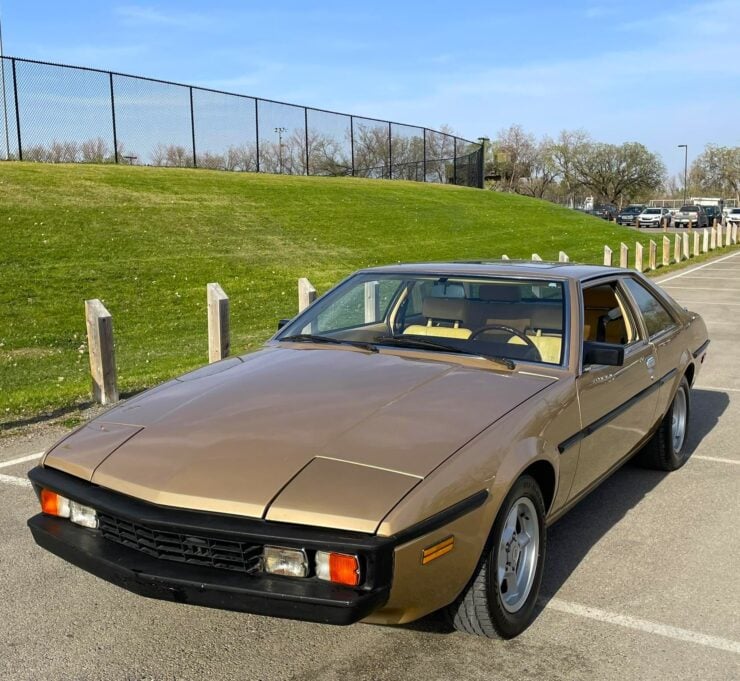

The intention was to appeal to discerning customers seeking exclusivity and quality beyond standard mass-produced models produced from the likes of BMW and Mercedes-Benz. Production numbers for the Bitter SC were modest – between its introduction in 1979 and the end of production in 1989, approximately 461 were produced.
Financial pressures in the late 1980s forced Bitter Automotive to cease production of the SC. The cost-intensive nature of small-scale car manufacturing, compounded by economic shifts and changing market demands, led to the company shifting its business model towards consultancy and limited-run specialty projects.
Today, the Bitter SC remains a sought-after collectible, recognized for its distinctive and perhaps slightly quirky character and blend of German practicality with Italian styling.
The 1985 Bitter SC Shown Here
This is a 1985 Bitter SC that comes with the spec-sheet that essentially everyone wants, it has the more powerful 3.9 liter inline-six coupled to the 5-speed manual transmission.
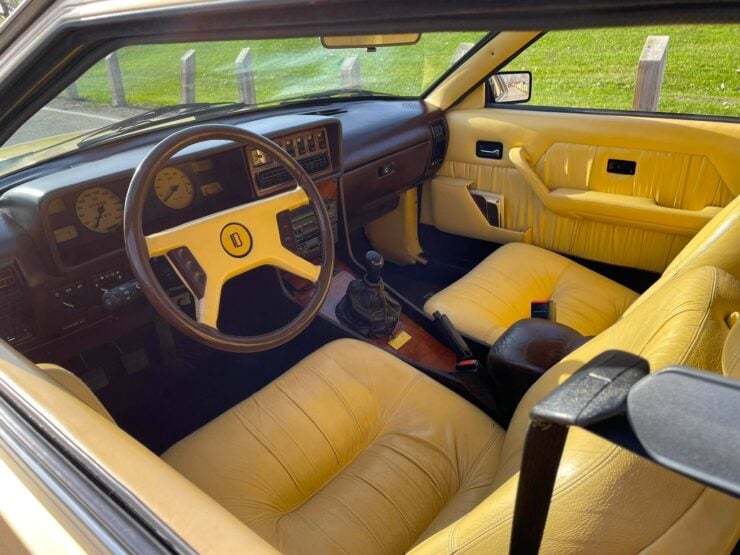

This car was said to have been bought by the seller just three months ago from the family of the second owner, who had it in their possession since 1990.
This SC is finished in gold over a beige leather interior, and it has 15” Ronal wheels, a power-operated sunroof, power windows, and air conditioning.
It’s now being offered for sale out of Regina, Saskatchewan, Canada with factory service and owner’s manuals, a clean Carfax report, and Saskatchewan registration. If you’d like to read more about it or register to bid you can visit the listing here.
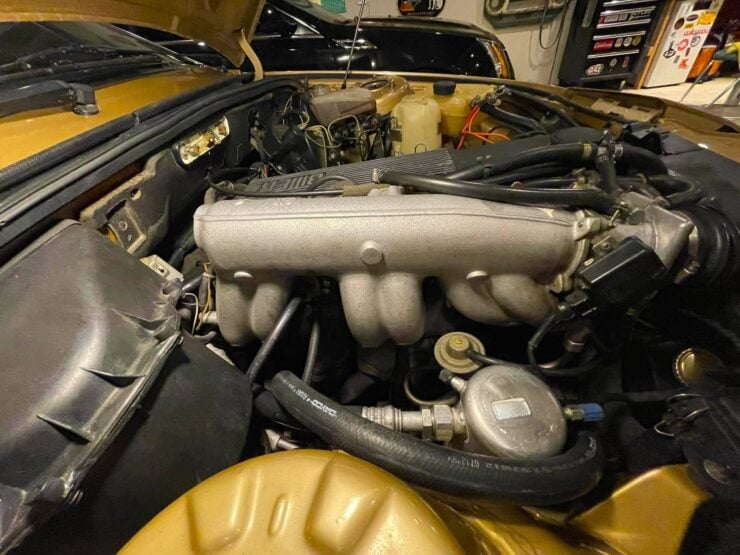
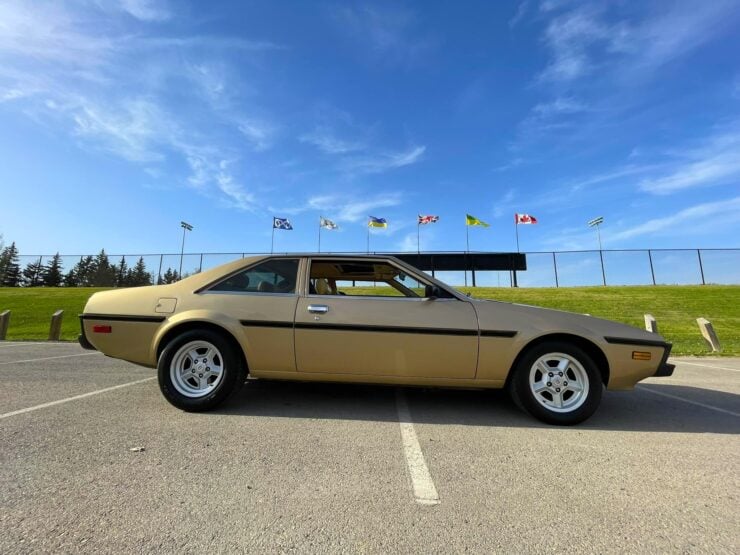
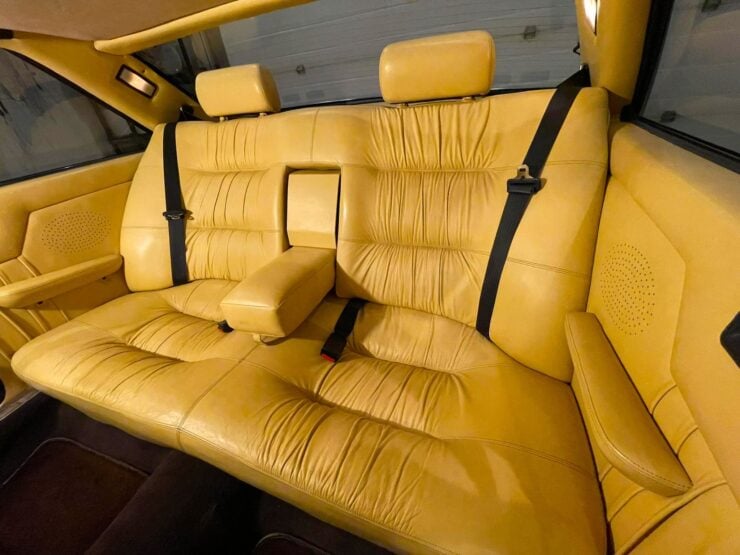
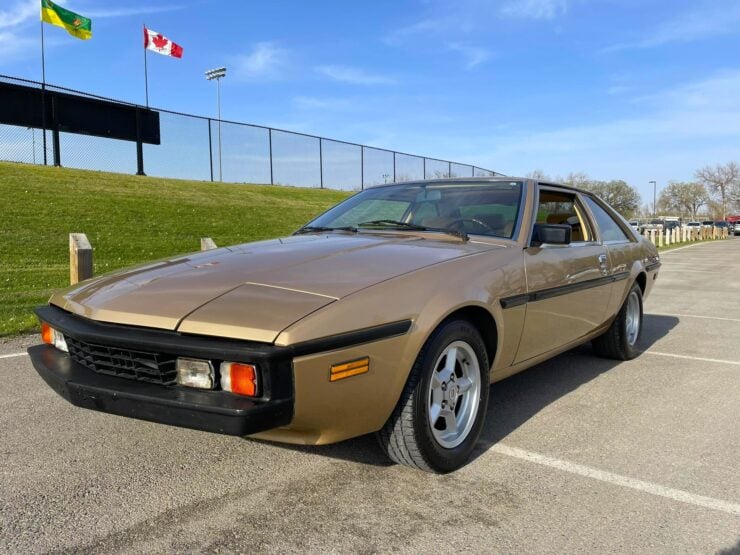
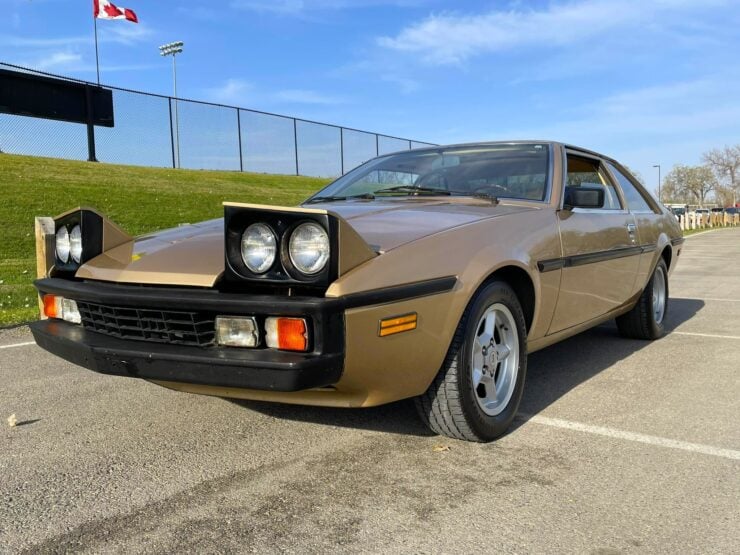
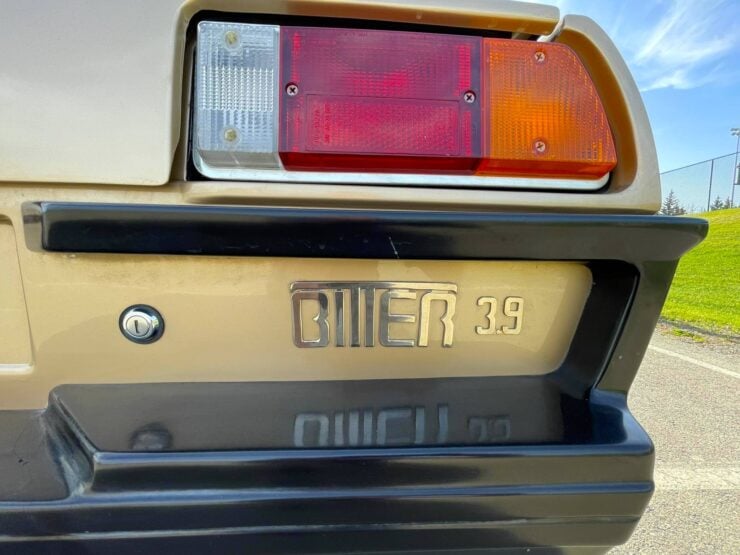

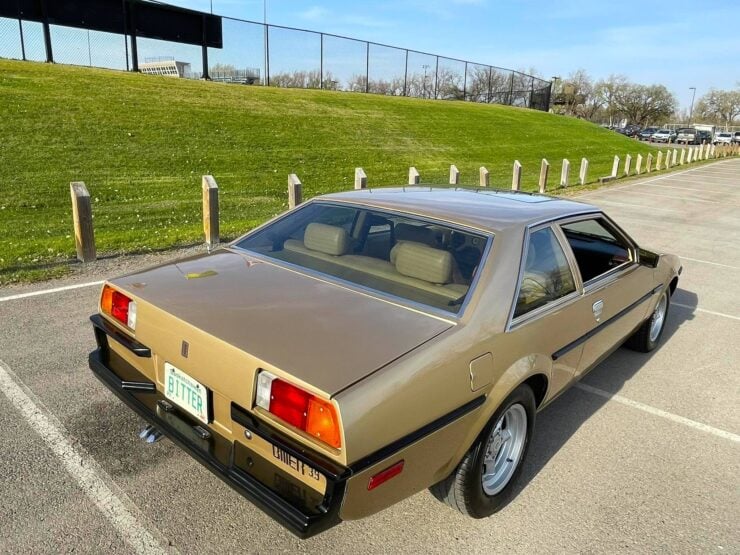
Images courtesy of Bring a Trailer

